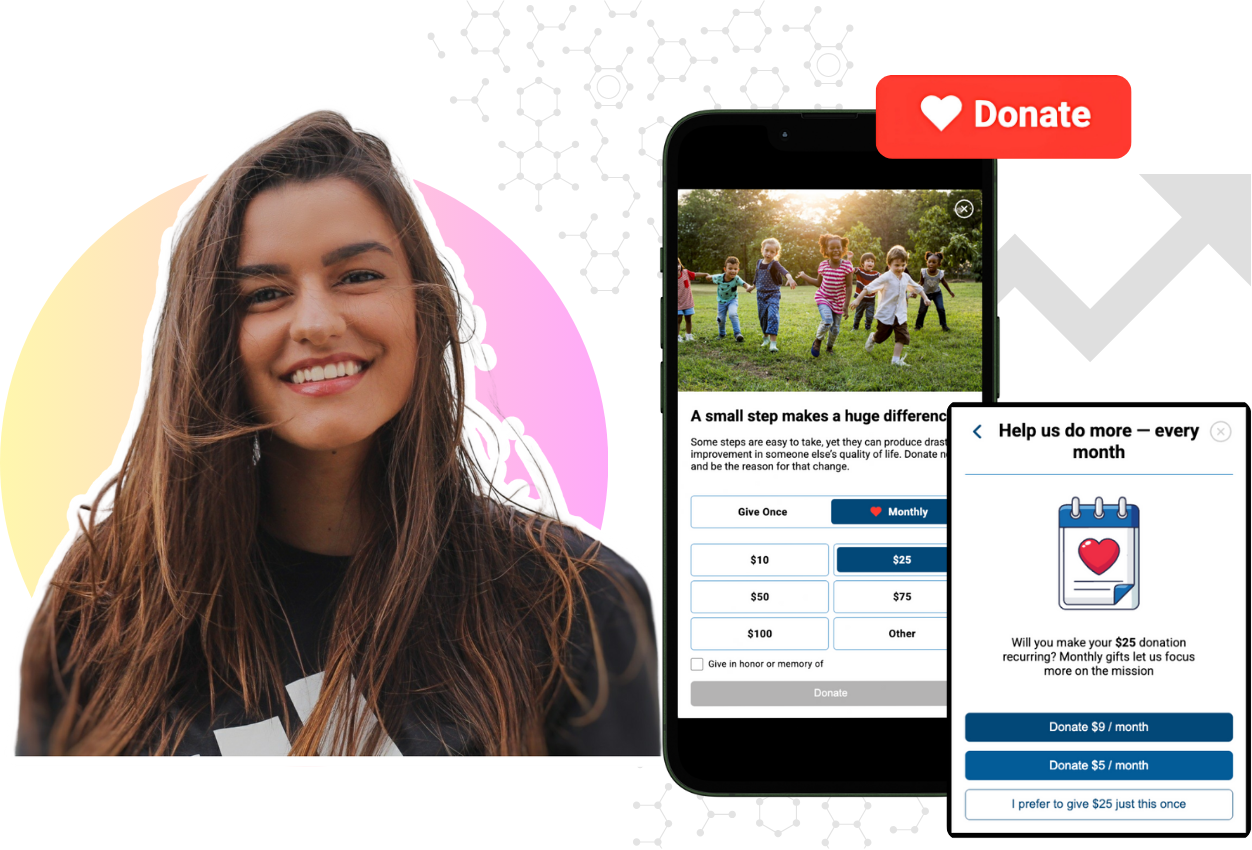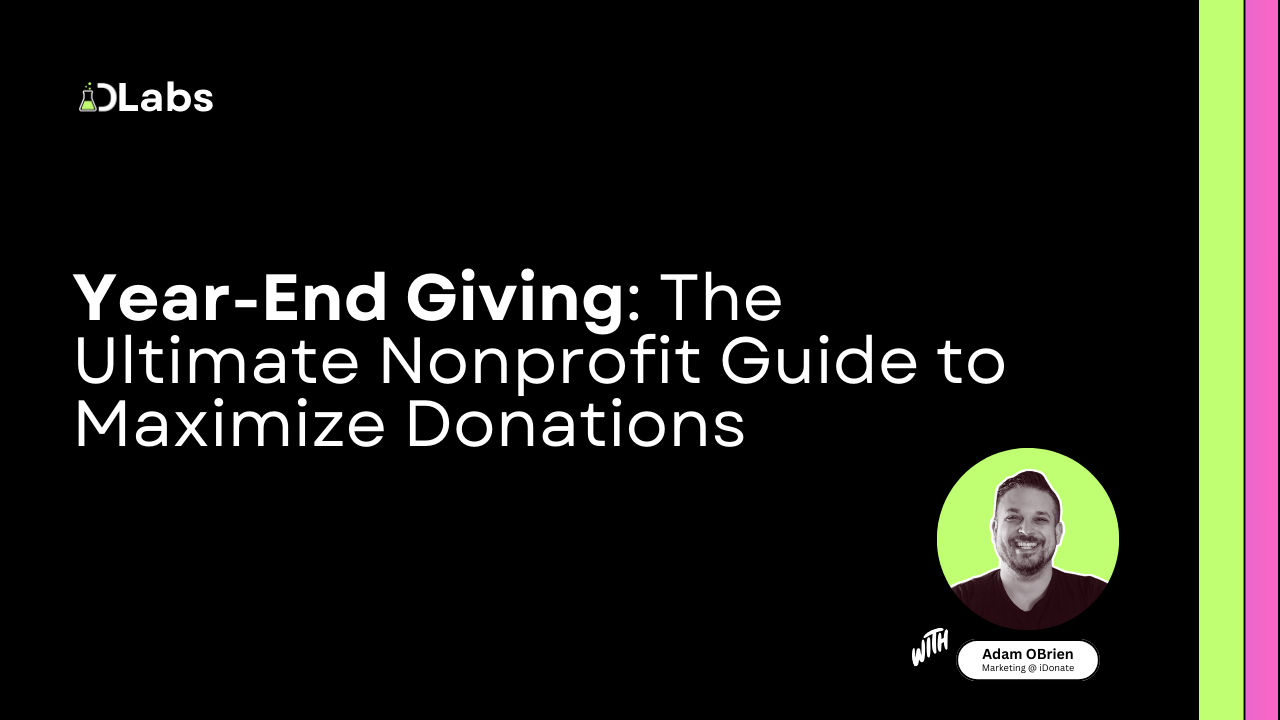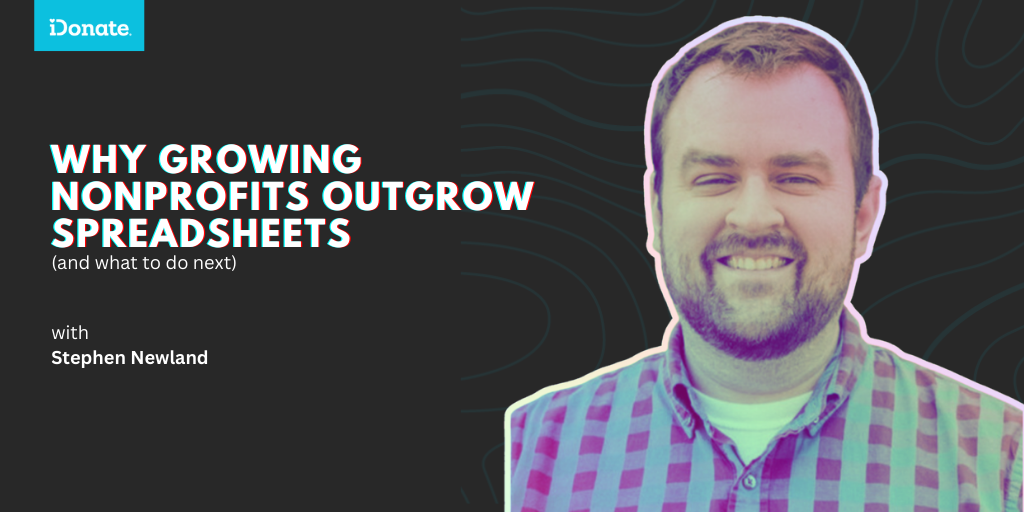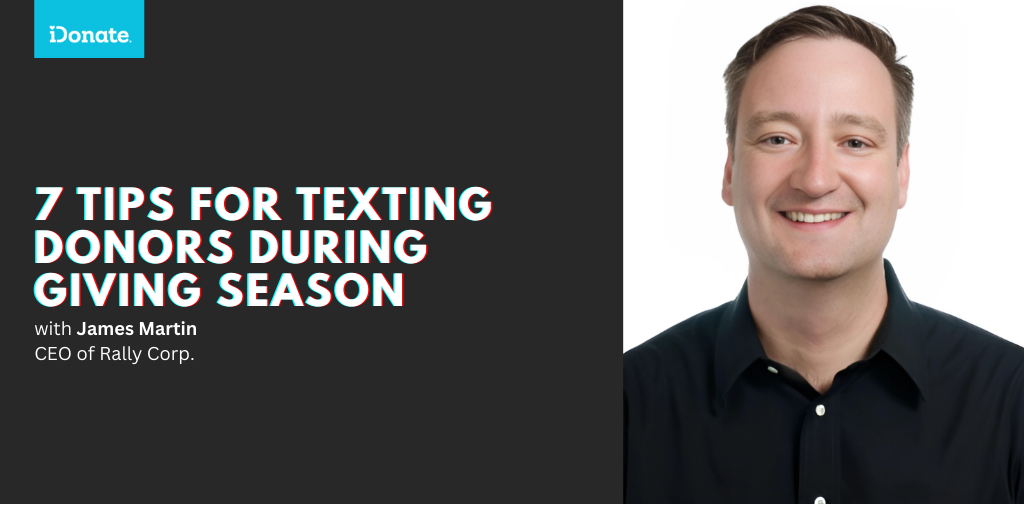Why Growing Nonprofits Outgrow Spreadsheets (And What to Do Next)
Every growing organization reaches that moment where they have more spreadsheets than they can count.

Mobile-First Pop-Up Donation Form
Launch mobile-first pop-up forms in minutes, use built-in tools to capture more donations, and optimize the giving experience—no dev team required.
New to online donation pages for your nonprofit? Start here.
Donation page A/B testing - no science degree needed.
Keep your donation page loading fast - and drive higher conversions.

The 4 Types of Online Donation Experiences
89% of donors leave without giving. Learn how to use the right donation form to close the gap and boost conversions.
6 min read
 Adam OBrien
:
September 5
Adam OBrien
:
September 5

Let’s be real — the pressure of year-end giving is real.
It’s the last sprint of the year. Goals to hit. Budgets to close. Donors to engage.
And for many nonprofits, what happens in the final 30 days can make or break the year.
If you’ve ever felt like:
— You’re not alone.
The good news? You don’t have to leave year-end giving to chance.
This guide will walk you through how to plan, message, and maximize your year-end campaign — so you finish strong, with more donors and more impact.
Most nonprofits treat year-end giving like a one-time campaign.
But successful nonprofits treat it like a season — a 90-day runway that builds momentum.
Here’s what they do differently:
Here’s the truth: Most nonprofits approach year-end giving with a single email and a whole lot of hope. But hope isn’t a strategy — and it won’t fill your donation goals.
If you want to stand out in a crowded inbox and inspire real generosity, you need to show up with the right message, to the right donors, at the right time.
Below are 5 proven strategies that are working right now — and you can swipe every single one for your campaign.
Most nonprofits say: “Please donate to support our mission."
But what moves people is a real story — with a name, a face, a journey.
Instead, say: “Meet Sarah. She never thought she’d be homeless. But this winter, because of you, she has a warm place to sleep. Your gift of $100 can give that to someone else tonight.”
A person you helped (first name only for privacy)
A family that saw transformation
A real example of impact from last year’s giving
💥 Bonus Tip: Use photos or videos if you can — stories + visuals = powerful.
Here’s the truth: If giving feels hard, people won’t do it.
Checklist for an easy giving experience:
Mobile-friendly donation page
Suggested gift amounts (with impact: “$100 = 1 month of shelter”)
Matching gift prompts (“Double your gift today!”)
Fast payment options (PayPal, Apple Pay, Venmo)
💡 Pro tip: Test your own donation page on your phone — if it takes more than 2 clicks, fix it.
People procrastinate — until they don’t. Urgency drives giving.
How to create urgency:
🔥 If you can get a matching donor, do it. Matched gifts convert 3X better than standard asks.
Your longtime donors shouldn’t get the same message as a first-time giver.
Break it down like this:
✅ Segmented emails drive higher open and conversion rates — and make donors feel seen.
You need a real plan, not a one-and-done ask.
Recommended flow:
💡 Hint: Reuse core message, but change the angle — story, match, countdown, impact recap.
Let’s face it: Knowing what to do is one thing — but seeing how others are doing it well makes all the difference.
Below are real examples of high-converting emails, subject lines, and asks that have driven serious donations — so you’re not starting from scratch. Take them. Tweak them. Use them today.
Because sometimes, the best strategy is knowing exactly what works — and copying it.
Fact: Your email doesn’t get opened? It doesn’t get read.
Here are subject lines that cut through the noise and drive urgency:
💥 Steal this tip: Pair subject lines with a preview text that teases the story:
“Sarah found shelter because of donors like you. Here’s how to help one more family.”
Not all asks are created equal. Vague asks don’t work. Specific, impact-driven asks do.
Here’s a side-by-side of what not to say — and what drives action:
|
❌ Weak Ask |
✅ High-Converting Ask |
|
“Please donate to support our mission.” |
“Your gift of $100 will give a family a warm place to sleep this winter — and today, it will be doubled.” |
|
“Help us continue our work.” |
“Right now, families like Sarah’s are waiting for shelter. Give by Dec 31 to ensure no one is turned away.” |
|
“Consider supporting us this year.” |
“Be the reason a child has a safe place to call home before midnight on Dec 31.” |
💡 Pro tip: Tie a specific dollar amount to a real-life outcome. People give when they know what their money does.
Subject: “Only 48 hours left to change a life this year”
Header: “There’s still time to give hope.”
Body:
Right now, Sarah is waiting for a safe place to sleep.
Your gift of $100 will give her a warm bed and a fresh start — and today, it’s matched dollar for dollar.
This is your last chance to make a 2025 tax-deductible gift — and change a life before midnight.
CTA Button: [Give Before Midnight]
P.S. Your gift will be matched up to $50,000 — but only until the clock strikes twelve.
Why this works:
Stop posting just to post. These social posts are designed to drive donations fast — and they work best when paired with visuals.
Only 3 days left to change a life this year.
Every donation before Dec 31 is doubled to help families like Sarah’s find safe shelter.
🎯 Goal: $50,000 by midnight. We’re 78% there — will you help us cross the finish line?
[Donate Now] #YearEndGiving #DoubleYourImpact #GiveHope
⏰ Countdown: 24 hours left to give!
Your gift will change lives — and be doubled thanks to a generous match.
Don’t miss your chance to make a tax-deductible donation before the year ends.
[Give Now] #LastChance #YearEndGiving #Nonprofit
Because of donors like you, we’ve already raised $42,000 this December.
But we’re still $8,000 away from helping every family who’s asked for shelter.
Can you help us close the gap before midnight? Every dollar counts.
[Donate Now] #YearEndGiving #FinalPush #Impact
Here’s something most nonprofits miss: A donation is the start of a relationship — not the end.
If all you send is a tax receipt, you’re missing a huge opportunity to:
Donors who feel appreciated are 3X more likely to give again.
Here’s what a great thank-you email looks like — short, punchy, and memorable:
Subject: You just changed a life — thank you.
Header: You made this possible.
Body:
Hi [First Name],
Because of you, someone will have a safe place to sleep tonight. That’s not a small thing — and we couldn’t do it without you.
Your generosity means hope, safety, and a fresh start for families like Sarah’s.
Want to see how your gift is already making an impact? Click here to meet Sarah and hear her story.
Thank you for being part of this — we’re so grateful to have you in our community.
With gratitude,
[Executive Director Name]
✅ Why this works:
💡 Pro tip: Want to level this up? Record a 30-second thank-you video from your ED or a beneficiary — and link to it in the email. A personal thank-you skyrockets donor retention.
If you want donors to give again — make them feel like their gift matters.
Because when donors feel valued, they don’t just give once — they become part of your mission.
Here’s the deal — you don’t get a second shot at year-end giving.
Every day you wait is another day your donors don’t hear from you.
Another day you’re leaving money — and mission impact — on the table.
But if you act now, you still have time to run a campaign that blows past your goal — without burning out your team or throwing spaghetti at the wall.
That’s why we built iDonate’s Year-End Giving GPT — to make this season easier, faster, and way more effective.
🚀 Think of it as your campaign secret weapon — doing the heavy lifting for you.
Inside, you’ll get:
💥 All interactive. All ready when you are. All free.
1️⃣ Grab the Year-End Giving GPT right now — and start building a campaign that raises more (without spending hours figuring it out)
2️⃣ Book a free 20-minute donation page strategy session — and walk away with a real plan, custom to you (not some generic checklist)
3️⃣ Send that first donor email using the template we gave you — because action beats perfect.
Your choice:
❌ Keep guessing and hoping for the best.
✅ Or get the tools and plan you need to make this December your biggest fundraising win yet.
We’re here when you’re ready to win.

Every growing organization reaches that moment where they have more spreadsheets than they can count.

Your nonprofit organization should send text messages to donors this holiday season. You can reach people where they’re at, and it’s an incredibly...